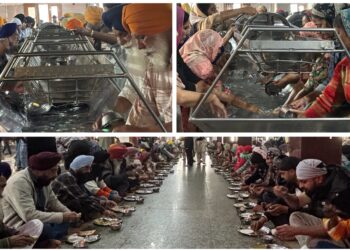The tragic Air India crash should have been a moment for grief and empathy. Instead, it became a trigger for yet another wave of racist commentary online — mocking Indian names, cultural stereotypes, and even the very presence of migrants in Australia. The dehumanising remarks were disgusting, but sadly, not surprising for many in the Indian-Australian community.
This episode isn’t happening in a vacuum. It reflects a deeper, systemic problem with racism in Australia — one that affects not just Indian Australians, but all racialised communities. But the scale of this recent outburst is a timely reminder: this is not a “community problem” to be solved within multicultural spaces alone. It’s an Australian problem — and it demands an Australian response.
1. Racism in Australia is a national problem, not just a multicultural one
Let’s be clear — what we’re dealing with is not simply the result of “cultural tensions” or inter-community misunderstandings. Racism in Australia is entrenched, systemic, and tied to long-standing structures of privilege and power.
The sense of entitlement that allows some white Australians to make openly racist remarks, often without consequence, comes from a place of unchallenged dominance. This is the legacy of colonial history and cultural conditioning, not isolated ignorance. It is reinforced when institutions fail to act decisively, and when conversations about race are reduced to symbolic gestures or events.
Of course, racism and prejudice exist within all communities — including our own. Many Indian Australians are uncomfortably aware of the caste, colour, and class prejudices that continue to travel with us. But these internal issues cannot be used to deflect attention from the systemic, public racism that racialised groups face, often amplified during moments of crisis like the Air India tragedy.
As NRI Affairs pointed out in a recent opinion piece, anti-racism cannot be a one-way conversation. The responsibility to confront racism lies with society as a whole, particularly with those in positions of power. Too often, racialised communities are expected to shoulder the burden of “fixing” racism — by integrating more, keeping their heads down, or proving their worth. That approach fails to address the root problem and only reinforces structural inequality.
2. Racism is a legacy issue that requires cultural reprogramming
The persistence of racism in Australia — like elsewhere in the world — is not an accident. It is the legacy of a colonial project that entrenched white superiority as the cultural default and left generations with inherited ideas of racial hierarchy.
Racism, at its core, is irrational. Attempts to dress it up in fears over jobs, migration, or “cultural fit” rarely hold up to scrutiny. But dismantling it requires more than facts — it requires cultural change. It requires institutions, schools, workplaces, and governments to actively disrupt the social norms that allow racism to persist.
And that change must be systemic, sustained, and supported by political will.
3. We need honest, inclusive dialogue — backed by action
The path forward is through honest, inclusive conversations about race — not confined to Harmony Week or multicultural festivals, but embedded in national dialogue and policy.
This means involving governments, civil society, academics, faith leaders, educators, media, and everyday Australians. It means creating safe spaces for people to share their experiences of racism — and their own biases — and for difficult but necessary conversations to happen.
Crucially, it also means moving beyond tokenistic engagement. Far too often, multicultural communities are consulted selectively, usually around elections or for symbolic events. That does nothing to build long-term inclusion or resilience.
Organisations that do the hard work of building social cohesion — groups like The Humanism Project, Turbans for Australia, Muslim Collective, Hindus for Human Rights, Indian Crescent Society, and multicultural media like NRI Affairs, South Asia Times, Kehte-Sunte Radio and Radio Sanjhi Awaaz — must be recognised and properly supported. These groups are already creating spaces for tough conversations and inter-community collaboration. Their work is vital — but too often overlooked.
4. The AHRC Anti-Racism Framework offers an opportunity — if we seize it
The good news is, the groundwork for meaningful change is already there. The Australian Human Rights Commission’s National Anti-Racism Framework, released last year, sets out 63 clear recommendations to tackle racism at a structural level — from education and policing to media, politics, and community engagement.
The framework emphasises prevention, education, and long-term cultural change. It calls for greater support for anti-racism organisations, stronger public messaging, investment in community-led initiatives, and a whole-of-society approach to addressing prejudice.
The ideas, the frameworks, and the people ready to drive this change all exist. But for now, much of the framework remains under-implemented and underfunded. Organisations working on anti-racism and social justice report that broad community education — the kind that can actually shift cultural attitudes — simply isn’t receiving the level of support or resources it needs.
But this isn’t a cause for cynicism — it’s an opportunity. The framework provides a national blueprint for action. What’s required now is serious political will, sustained investment, and the involvement of all communities — not just those who experience racism, but those who have the power to dismantle it.
5. The way forward — collective responsibility, not blame
It is easy to fall into defensiveness or finger-pointing when moments like the Air India tragedy reveal the undercurrent of racism in society. But this isn’t about assigning blame — to Indians, to other migrant communities, or even to individual bigots. It is about recognising that racism is a systemic problem that touches all parts of Australian life, and it requires a systemic response.
Indian Australians — like all communities — have a role to play in building a fairer, more inclusive society. But the burden cannot fall on racialised groups alone. Governments, institutions, and mainstream Australia must step up, own the problem, and invest in real solutions.
The tragedy of the Air India crash exposed more than grief — it exposed the cracks in our social fabric. But with political courage, honest dialogue, and a commitment to implementing the AHRC’s anti-racism roadmap, we have a real chance to mend them.
It’s time we took that chance.











